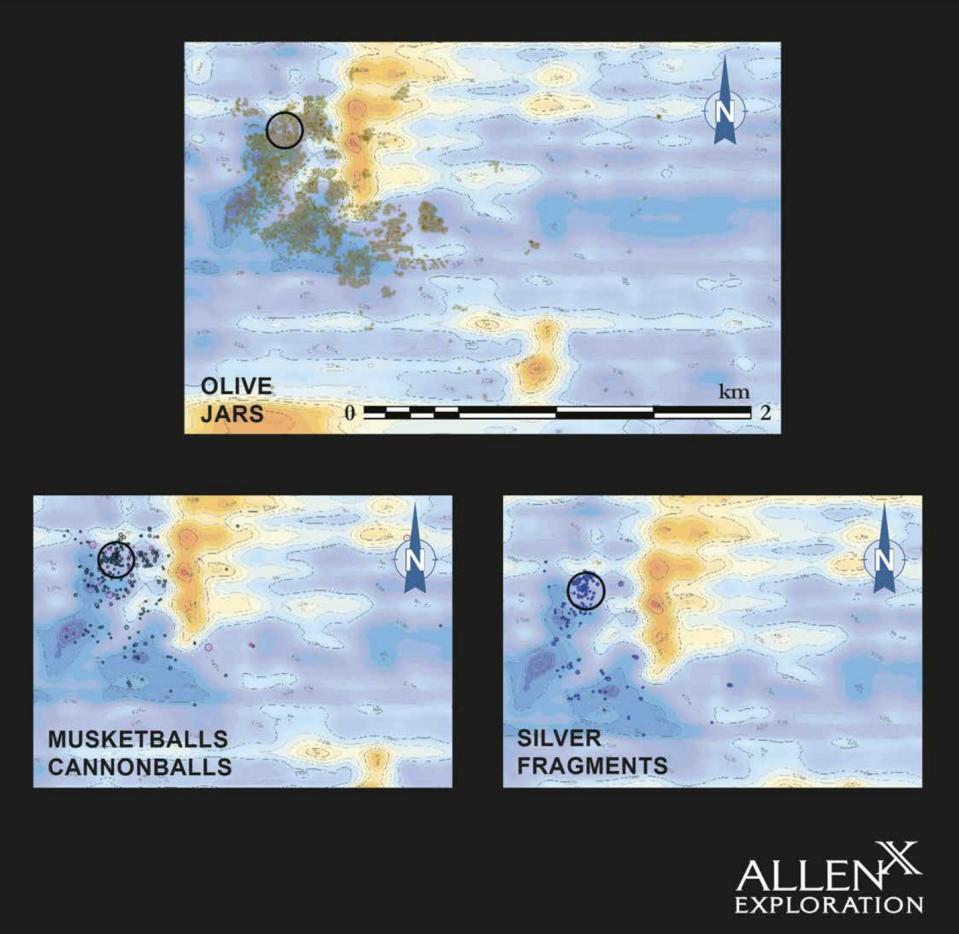After years of careful exploration, divers helped trace a trail of scattered artifacts and treasure that stretched for more than two miles by mapping waters off the Bahamas, drawing archaeologists and adventurers alike in search of the remains of a legendary shipwreck.
The Nuestra Señora de las Maravillas, a Spanish treasure ship, sank near the Bahamas in January 1656 after colliding with another ship. Treasure hunters have since explored the area in search of the ship’s lost cargo, and some historians estimate that around 5 million pesos worth of silver bars, coins and worked silver were recovered from the site between 1656 and 1683. Major exploration and recovery projects continued over the following centuries, and the wealth of remains found by the adventurer Robert Marx in 1972 was particularly notable among the treasure hunting expeditions in that area.
“Some people claim that it is one of the richest Spanish galleons to go down in the New World,” said Michael Pateman, curator of the Maritime Museum of the Bahamas in Freeport, speaking about the Maravillas in an interview with “CBS Morning” in April. Maritime archaeologist Jim Sinclair argued in the same interview that the main treasure trove of the lost ship has yet to be found, saying, “We’re probably looking at well over $100 million that’s still sitting in the sand out here. “
The Bahamian government put a moratorium on salvage trips in 1999 after too many artifacts removed from the wreck ended up in auctions and private collections around the world. But in 2019, the government lifted that moratorium to grant AllenX – formerly Allen Exploration – a license to explore whatever was left.
With the permit, the company began surveying the waters west of the Little Bahama Bank for the remains of the 891-ton, two-deck Spanish galleon. Their remote sensing surveys and physical diving teams have so far identified a large number of remains that disappear from the original point near the spot where the Maravillas hit the reefs on January 4, 1656.
AllenX has yielded about 8,800 “potentially culturally significant” items, the company said in a new report detailing the findings. He notes that the Maravillas deposit trail stretches nearly 3 1/2 kilometers, or just over 2 miles, from a main ballast pile first discovered in the 1970s, and says the area is also about a mile wide. A ballast pile is a mound of stones once stored in the belly of a vessel to stabilize it in the water, which can provide clues to the location of a shipwreck.

The complex trail of scattered artifacts consists of “a very diverse range” of items considered culturally significant by Bahamian explorers and officials, from “loose ballast stones, the occasional wooden plant, iron rigging, transportation concretions gun and two swivel guns of iron to ceramics. , silver pesos, silver bars, emeralds, amethysts and gold jewelry,” the report says.
Today, most of the remains of the Maravillas are buried under a layer of sand, some as deep as 1 1/2 miles, as they have been buried and spread over the seabed by waves and, in some cases. over hundreds of years, extreme weather events such as severe hurricanes.
Lying under all that sand, explorers identified thousands of objects that once came from the Maravillas, and carefully mapped each item found. The trail of remains includes approximately 11,000 fragments of olive jars, nearly 3,000 silver coins, 828 lead musket balls and 125 emeralds and amethysts. Working under government license, AllenX has recovered a total of more than 10,000 artifacts from the Maravillas, including pendants, gold chains, silver bars and crucifixes, many of which were found intact.


Contrary to what the deluge of past explorers who have explored the ship’s location might suggest, AllenX confirms in his latest report that “the Maravillas were not rescued in error,” adding, “significant archaeological remains survive.”
“Artefacts of intrinsic significance have not only transcended similarity, so have collections of material of technological, socio-economic and religious significance,” the company writes. Several items identified and mapped from the Maravillas help to understand what life was like on the ship, with AllenX saying that two swivel guns were once installed on the deck “for attackers trying to board the to fire an enemy ship or ships to rake.”


“Personal belongings and contraband from the quarters of officers and passengers are particularly common,” the report says. “They ranged from shipping equipment and Chinese porcelain and majolica from Seville and Pueblo in Mexico that officers and passengers ate out with silver forks to gold and gem-inlaid jewelry, chest keys, swords and smuggled emeralds and amethysts.”
What’s next for Rush?
Cary Grant: The man we thought we knew
Companies, countries battle to develop quantum computers | 60 Minutes